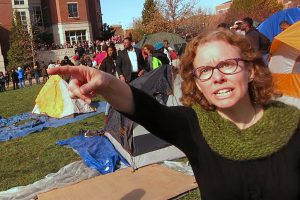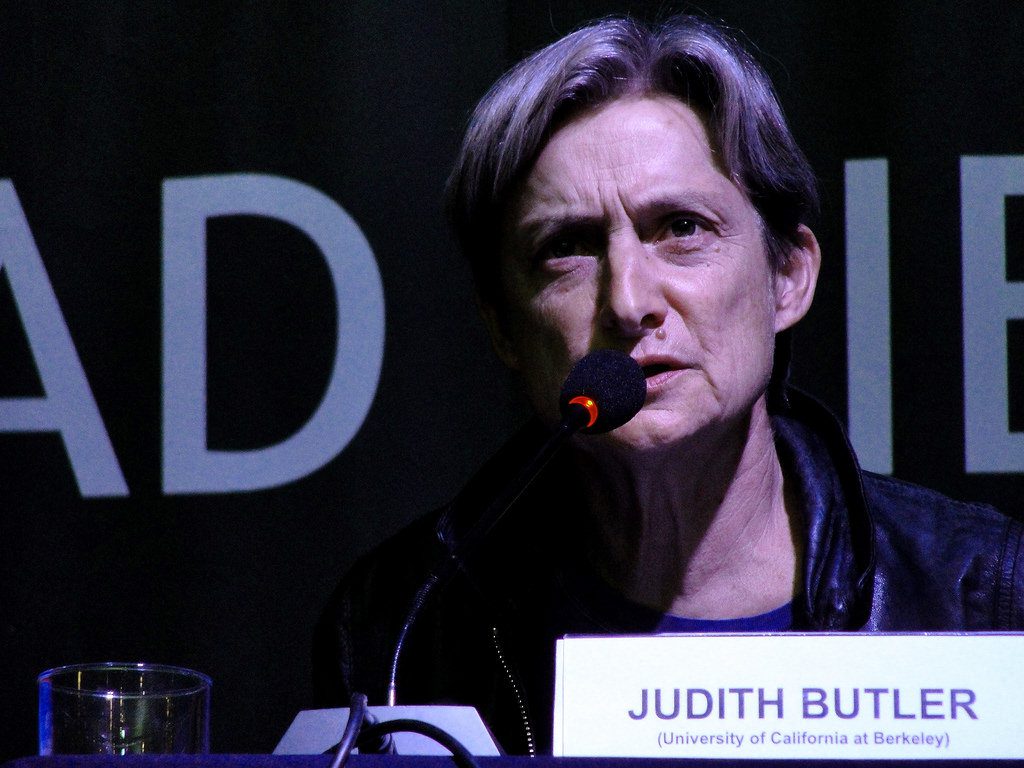Education
Methods Behind the Campus Madness
Then institutions of higher learning will again be a place for what they were originally meant, the exchange of ideas and verifiable knowledge.

Unless you are living under a rock, you should know that a recent talk by Charles Murray was shouted down by a group of Middlebury College Maoists and was followed by random acts of violence and assault in a carpark. As Murray was escorted out, by Professor Allison Stanger, a renowned scholar of International Relations, a lady more courageous than any of the wannabe Red Guards acting like brutes in a pack, she was pulled by her hair, which affected her neck, and she was forced to go to the hospital and wear a neck brace. Murray, a scholar known for his provocative, and hitherto unreplicated 1994 opus, The Bell Curve, was invited to the college to give a talk about his more recent book, Coming Apart. The rest, is well archived and painful. I wrote recently that the campus violence won’t stop with the violence in Berkeley against Milo. I wasn’t wrong.
One look at the protesters would be enough to fathom that none of them even bothered to read Murray’s scholarship; that would indeed be civil and intellectual, two essential characteristics that the majority of these neo-Bolsheviks lack. The look on their faces is that of rabid ideologues. You cannot reason, or debate with these sort of people. They understand only the language of force and power and nothing else. They will also not dare to engage with you individually, preferring to act in a mob, knowing that their shamefully minimal intellect isn’t enough to engage in any sort of debate, which they will lose as their ideas are ill-informed, at best, or idiotic at worst.

As Michael Rectenwald recently said:
[W]hat we see is a shouting match instead of the exchanging of ideas and intellectual activity. These people are obviously anti-intellectual and that is quite obvious. We have an anti-intellectual left.
For untrained Western eyes, these individual acts of violence across campuses now look like a “new normal” where random mobbing by a vicious minority is setting the terms of the debate and discourse in Western academia, while the majority is being cowed into silence. Unfortunately, for someone born and brought up in Indian cities during the mid 90s ultra-violent student activism, this is all too familiar. Professors In the rowdy streets of Kolkata, were routinely mobbed, and beaten up with neon tube lights and metal flag poles, classes cancelled and libraries rampaged and books torched.

The outbreaks of violence in India during mid-90s, represented the last days of dying socialist control at Indian universities. The ideas of the free market had become unstoppable, and a violent resistance to these ideas was instigated and inflamed by a handful of professors with an ultra-left background. Correlation is of course not causation, but correlation leads to recognizable patterns. There is a method in this campus madness in the West as well.
Most of this campus violence and intolerance wouldn’t occur, for example, without the vocal and tacit support of a sub-section of faculty within today’s academic community. This is therefore much more cynical than a random, spontaneous outburst of student activism which accidentally turns violent. This section of academia, the majority of them postmodernists and ultra-leftists, explicitly endorse the suppression of their ideological opponents as well as free speech and debate. And they explicitly promote an ideological movement which involved hijacking Western academia and using students as their personal army. Here are four immediate cases.
The latest of course is the protest against Murray, where a section of Middlebury College academics wrote open letters against inviting him. Most of the academics, who are not from Murray’s field and are not qualified to judge Murray’s work. Some of them completely ignorant about Murray’s work, and are transparent about it, basing their opposition on purely political grounds, inspired by a libelous profile of Murray by the notorious ultra-left Southern Poverty Law Center, an institution whose credit-worthiness has come under serious question.
Murray himself has wondered:
That leads me to two critical questions for which I have no empirical answers: What is the percentage of tenured faculty on American campuses who are still unambiguously on the side of free intellectual exchange? What is the percentage of them who are willing to express that position openly?
Stanger had a similar opinion:
I was genuinely surprised and troubled to learn that some of my faculty colleagues had rendered judgment on Dr. Murray’s work and character, while openly admitting that they had not read anything he had written.

Yet similar dog-whistling occurred before at Berkeley, where a section of academics were opposed to Milo Yannopoulos’s talk and wrote an open letter against him calling for protests and no-platforming. In Yale, a movement against teaching Shakespeare in English courses, was spearheaded by postmodernist academics, working on Queer theory. And everyone of course remembers Melissa Click. The cancer of a handful of ideological academics deciding the fate of an institution is slowly spreading to this side of the Atlantic as well.
Just out of curiosity, I went and glanced through the CVs and areas of expertise of the academics behind the Berkeley violence and it was exactly what I expected. In the case of Berkeley academic-activists against Milo, 12 out of 13 academics who signed the original letter, were from Critical theory, Gender studies and Post-Colonial/Postmodernist/Marxist background. If one funds a research behind the campus activism, violence and open letters in other institutions and universities, I am fairly certain, it will be all spearheaded by critical theorists and postmodernists. Almost none of them will be qualified to judge any subject, from economics to international relations, to genetics, and evolutionary biology. Almost all of them would be activists.

It behooves us to remember that throughout 20th century, we saw authoritarianism target academia first. Free exchange of ideas is the greatest enemy of totalitarian and unscientific ideological claims, and free exchange is therefore opposed by ultra-left as well as ultra-right.
Freedom of speech and expression is a fundamental and absolute right in advanced societies, because without that guarantee it is utter societal chaos and Matsyanyaya, where the strong finds a way to dominate the weak — using arbitrary and mutating rules. Unfortunately, history also teaches us, that most of the violence against free academia is usually led by academics. It’s easy to forget that two of the most notorious anti-intellectual totalitarians, Goebbels and Lysenko, were both academics themselves.
The coup that Western academia experienced from the 1980s onwards has been subtle and did not feature marching jackboots and tanks. But it has been equally dangerous, and has resulted in a specific minority of rabidly ideological academics, who have tried to stifle debate and oppose Enlightenment values including science, and have set the tone of debate from transgender toilets, to books, curiculum and courses, to student sex lives. Postmodernists have tried to hijack biology, have taken over large parts of political science, almost all of anthropology, history and English, and have proliferated self-referential journals, citation circles, non-replicable research, and the curtailing of nuanced debate through activism and marches, instigating a bunch of gullible students to intimidate any opposing ideas.
The protests, marches and campus violence is going into overdrive now, because of a simple reason. In 2008, the culture war was seemingly all but won by the postmodernists and ultra-leftists within academia. The last eight years has been about inflated threat of “rape culture” on campus, wage gap myths, Transgender bathroom rights, Anti-Israel boycotts, and the “no platforming” of conservative and libertarian speakers, not to mention the outgrowth of “safe spaces”, and Black Lives Matter. But 2016 highlighted an ever increasing disconnect between the ivory tower dwellers and the taxpayers who fund their meaningless research and activity and the recent turmoil has shown us that the culture war is not over yet. There’s therefore palpable panic amongst this handful of academics, who have made a career for far too long out of bogus subjects with no future job prospects for students, interdisciplinary research which lacks rigour, and obviously biased activism. They have glimpsed that their time is up and what we are seeing is the last violent gasp of a dying breed.
So what is to be done? In India, laws were enacted barring campus activism in elite institutions of national importance, and professors who encouraged criminal activity such as vandalism were sacked. However, forces of economics are still the strongest deterrence in society. Western universities need to cut off the scholarships and research funding of postmodernists, and disband departments which promote toxic, divisive, pseudoscientific ideology. Then institutions of higher learning will again be a place for what they were originally meant, the exchange of ideas and verifiable knowledge.





